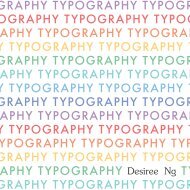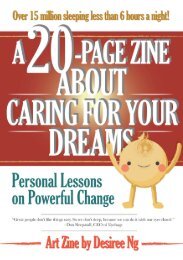DifferentMagazine
You also want an ePaper? Increase the reach of your titles
YUMPU automatically turns print PDFs into web optimized ePapers that Google loves.
TIMING IS EVERYTHING<br />
Take the timing into account. The announcement of Michele’s<br />
appointment came at a relatively quiet moment in fashion –<br />
before the Hedi Slimane departure rumors started, before Raf<br />
Simons took the industry by surprise when he announced that he<br />
was leaving Christian Dior, and before Alber Elbaz was abruptly<br />
shown the door at Lanvin. As we have come to see first hand, over<br />
the past several years, in particular, this game of musical chairs<br />
proves immensely entertaining for fashion fans. With the creative<br />
directors of big houses being thrust into the spotlight – becoming<br />
celebrities of sorts – the level of interest amongst those on the<br />
periphery has risen.<br />
So, the natural cycle of musical chairs (which was been sped up<br />
enormously over the past several years) becomes something of a<br />
must-watch, must-witness process from the initial appointment<br />
speculation rumors, to the confirmation, to the subsequent debut<br />
and the aftermath, the latter of which tends to be polarizing. For<br />
instance, as Vanessa Friedman recently wrote of Slimane’s YSL:<br />
“Remember the initial shock! horror! at his grunge girls on the<br />
runway in Season 2?” As such, creative director debuts – which<br />
appear to be coming with increased frequency – are something of<br />
an interactive experience, complete with nail-biting anticipation.<br />
And the Michele for Gucci appointment has been no exception.<br />
Following months of rumors that Gucci’s former creative director,<br />
Frida Giannini, was to be ousted, after years of disappointing<br />
growth for the Italian design house, both Giannini and her real-life<br />
partner and Gucci CEO, Patrizio di Marco, were out. The<br />
fashion press had a field day. The publication of articles entitled,<br />
“Inside the Messy Firing of Gucci’s CEO and Creative Director”<br />
and “Downfall of Gucci’s power couple” ensued. But the drama<br />
did not end there; according to a report by the New York Times,<br />
on the heels of di Marco’s firing, he allegedly sent out a 3,000-<br />
page memo, some of which was made public. There was also the<br />
alleged speech (read: rant) that di Marco delivered to his employees<br />
at the Gucci cafeteria in Florence shortly before his departure.<br />
Such chief-level shake-ups do not just sell magazines or garner<br />
page views, they arguably create a sense of excitement, which, of<br />
course, must be coupled with the fact that such activity also tends<br />
to have a negative effect on value. As Vanessa Friedman noted in<br />
connection with Slimane’s recent departure: “Products themselves<br />
require investment. They are not cheap. Consumers have to<br />
believe they will hold their meaning over time. And the meaning is<br />
created by the designer.” This is undoubtedly true, but in Gucci’s<br />
case it seems to have produced more pros than cons.<br />
An injection of relevance with Giannini’s ouster and new life after<br />
Michele’s appointment put Gucci back on the map in Milan. It<br />
has certainly given fellow Italian brand, Prada, a run for its money<br />
in terms of being one of the most anticipated and talked-about<br />
shows during any given season. And as we have learned, consumers<br />
may just be buying a lot more Gucci than before. The house<br />
has posted growth (Gucci revenue advanced 4.8 percent for the<br />
fourth quarter of 2015, compared with the 1.5 percent growth<br />
expected by analysts, as reported in February), whereas its Prada<br />
continues to struggle in that regard.<br />
TURNING TALK INTO ACTION<br />
Gucci has taken its newfound fame and capitalized on it, using<br />
celebrities as leverage. Christina Binkley, fashion columnist for the<br />
Wall Street Journal, told us recently that Gucci is the celebrity’s<br />
go-to brand at the moment “because it’s the hottest brand around,<br />
their photos go viral when they wear it, and Gucci is brilliant<br />
about working with celebs.”<br />
This proves true as this award season saw Gucci being draped<br />
over the backs of Cate Blanchett at the Spirit Awards; Harry<br />
Styles at the American Music Awards; Nicole Kidman at the SAG<br />
Awards; Brie Larsson, Jared Leto, Lee Byung-Hun and Ryan<br />
Gosling at the Oscars; and, let’s not forget the event bigger than<br />
any red carpet in the U.S.: the Super Bowl, for which Lady Gaga<br />
wore custom Gucci. “It’s just good business on everyone’s part,”<br />
Binkley explains. “Also, particularly with men’s wear, there really<br />
isn’t anything out there to compete with those zany printed suits,<br />
so if you’re Harry Styles, there you are!”<br />
There is also something to be said for making and showing<br />
clothes people actually want to wear – something few houses have<br />
managed to do quite as well (as indicated by their need to revamp<br />
other aspects of their brands, such as the runway schedule and<br />
their deliveries, in an attempt to lure consumers back into stores).<br />
Michele, on the other hand, “has tapped a nerve. If you look<br />
closely, he’s drawing on bits and pieces from many other labels<br />
[and putting them together].” Binkley cites Dries van Noten,<br />
Marco Zannini’s Rochas, Chloé and Saint Laurent as potential<br />
inspiration, “He’s assembling them into a look that is strangely<br />
desirable right now. It’s an intellectual look, and it’s fearless.” This<br />
fearlessness seems perfect not only for gaining attention on the<br />
28 resulting success





